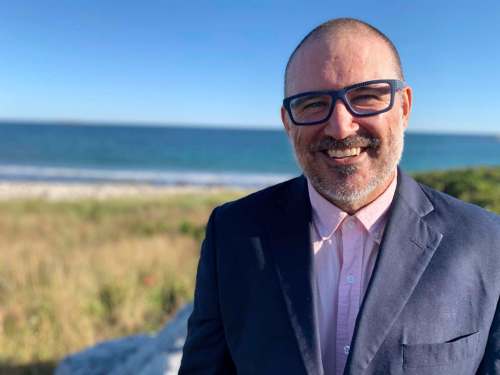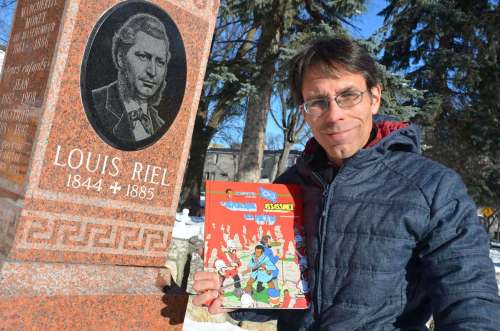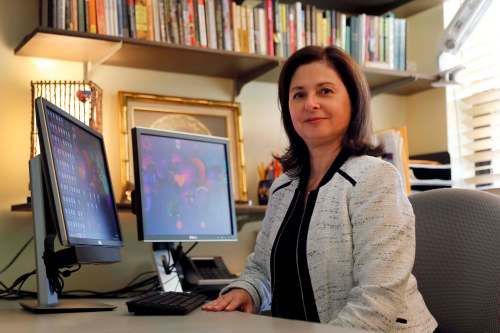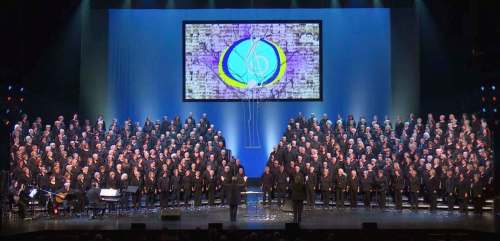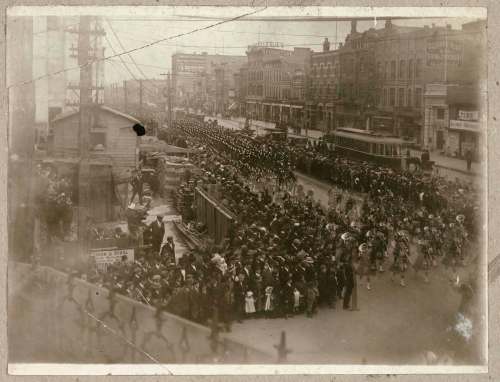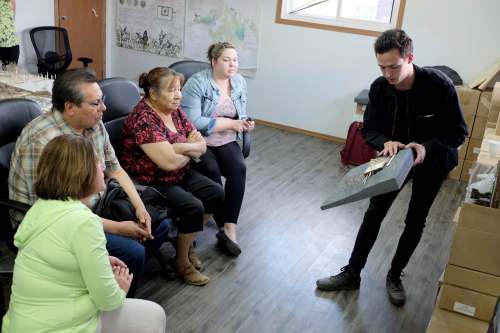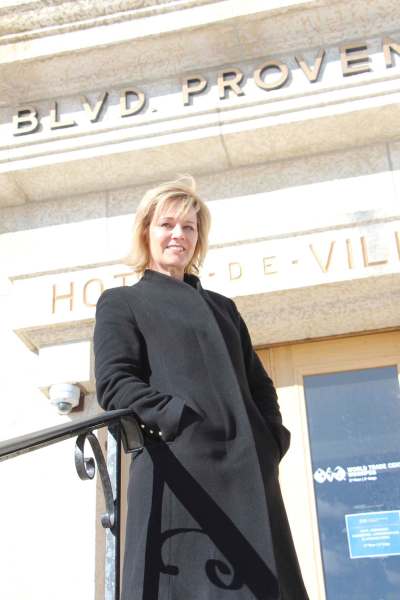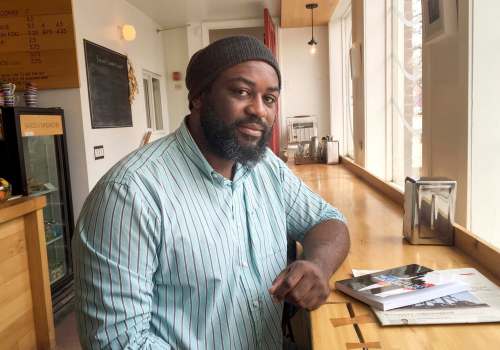Social Studies (general)
Even if games go on, MLB lockout could alienate Gen Z
8 minute read Preview Saturday, Sep. 20, 2025New book debunks Winnipeg-lab coronavirus conspiracy theory
2 minute read Preview Tuesday, Aug. 31, 2021Little things in life can take on big meaning
4 minute read Monday, Aug. 9, 2021Every once in a while, I have to try extra hard to look for the good things around me, especially lately.
I remind myself to poke my head outside of my echo chamber, and remember that even though the world seems to be on fire (literally and figuratively) there is still goodness and my soul needs to be nourished by it.
Sometimes, the brightest spot on my day is a jackpot — something like going on a vacation or finding a $5 bill in my pocket.
It’s the days that I easily make a connection with someone or have so much fun doing something that I forget about all the chaos around me.
Can we talk? Gannett promotes effort at bridging gaps
4 minute read Preview Friday, Sep. 12, 2025Puncturing the shield of ‘implicit bias’
5 minute read Preview Friday, Feb. 5, 2021Canadian demographics impact cultural shifts
3 minute read Preview Saturday, May. 2, 2020Claims of Indigenous ancestry by non-Indigenous Canadians on the rise
5 minute read Preview Saturday, Feb. 8, 2020C’est au tour des missionnaires africains
5 minute read Saturday, Aug. 10, 2019Depuis une vingtaine d’années, la contribution de prêtres missionnaires venus d’Afrique est toujours plus évidente dans le diocèse de Saint-Boniface. Joseph Nnadi, professeur retraité de l’Université de Winnipeg, a réfléchi à ce phénomène (1).
Il aime dire de l’abbé d’origine haïtienne Jean-Baptiste Georges, qui séjournait à Saint-Boniface durant les vacances d’été de 1945 à 1949, qu’il s’agit du « premier prototype de missionnaire africain » à Saint-Boniface: « L’archevêque Georges Cabana le faisait venir ici pendant l’été pour l’aider à convaincre les Noirs qui habitaient Saint-Boniface et peut-être aussi Winnipeg de venir à l’église. Les Noirs comme les Autochtones se sentaient négligés, méprisés, déçus... Cet archevêque a devancé les autres. »
Il aura fallu attendre le début des années 1990 pour voir d’autres prêtres africains arriver à Winnipeg, sous l’impulsion de l’archevêque Antoine Hacault. « Aujourd’hui, sous la gouverne de l’archevêque de Saint- Boniface Mgr Albert LeGatt, il y a 61 prêtres en ministère actif, dont 16 sont africains. »
Ce phénomène est appelé « l’évangélisation en sens inversé ». Dans les années 1960, l’évangélisation allait de paire avec la colonisation. « À l’origine du mouvement, l’évangélisation se faisait dans un sens, un peu partout vers l’Afrique et le tiers-monde. Maintenant, les missionnaires quittent l’Afrique pour aller dans les pays où l’Église catholique existe de longue date. L’Afrique a des missionnaires parce qu’elle avait reçu des missionnaires. On voit ce phénomène en France, en Italie, en Angleterre, au Canada... »
André Marchildon : son dynamisme au service de l’aérodynamique
3 minute read Saturday, Jun. 29, 2019ANDRÉ Marchildon, un Franco-Manitobain de 25 ans, n’a plus beaucoup de temps pour lui-même. En ce vendredi de la mi-juin, ce Winnipégois rentre à peine de sa journée de travail qu’il doit déjà se préparer pour son prochain voyage au Texas. Dans ses valises, l’étudiant en ingénierie aérospatiale à l’Université de Toronto emporte une présentation de ses recherches.
Il vient de remporter la bourse Vanier pour ses recherches dans le domaine de l’aérospatiale. Ce prix prestigieux récompense chaque année une centaine d’élèves à travers le Canada pour leurs recherches dans les domaines des sciences humaines, des sciences naturelles, du génie ou encore de la santé, mais aussi leur implication sociale.
André Marchildon : “Cette bourse est une chance, car ça me permet d’aller à plus de conférences et de pouvoir présenter ma recherche à beaucoup plus de monde, comme c’est le cas avec cette conférence au Texas.” Il porte ainsi les couleurs de sa communauté au-delà des frontières du Manitoba.
Actuellement en maîtrise, l’étudiant cherche à rendre les algorithmes utilisés pour calculer le mouvement de l’air autour des avions plus efficaces.
Support for news media a solid, welcome step
4 minute read Preview Monday, Sep. 8, 2025Pas facile, le baseball au féminin
4 minute read Saturday, Aug. 4, 2018Quand elle était enfant, Sophie Bissonnette n’avait pas d’intérêt évident pour un sport particulier. Ses parents ont donc décidé de l’inscrire au baseball, la passion de son père, Marc Bissonnette. Devenue elle-même amoureuse du sport, elle a joué pendant 15 ans dans des équipes masculines, puis féminines.
À ses débuts, le baseball était surtout l’occasion pour Sophie Bissonnette de passer du temps avec son père. “Il m’a toujours entraînée, et ça me plaisait beaucoup d’avoir ces moments avec lui. Dans ma première équipe, il y avait six filles et un garçon. Au fil des années, il y a eu de moins en moins de joueuses, jusqu’à ce que je sois la seule de mon équipe.”
Une situation qui a quelque peu préoccupé ses parents. “Ma mère était inquiète que je ne sois qu’avec des garçons. Mes parents m’ont proposé de passer au softball, pour être avec d’autres filles. Mais pour moi, c’est un sport complètement différent, et je ne voulais pas arrêter le baseball.”
Sophie n’a senti une différence que quand elle a commencé à jouer à haut niveau. “L’entraîneur me traitait comme les autres joueurs. Mais je n’étais pas la meilleure, et je sentais que je devais travailler plus fort, parce qu’il y avait des préjugés. Quand il y a 12 garçons et une fille sur le terrain, on remarque la fille et on prête plus attention à ce qu’elle fait. Mais j’avais ma place dans l’équipe, et j’étais prête à tout pour y rester.”
L’avenir de l’Arctique au cœur de Breaking Ice
4 minute read Saturday, Apr. 7, 2018Breaking Ice, c’est un aperçu de la vie sur un brise-glace de recherche, au beau milieu de l’Arctique. À travers son premier long-métrage documentaire, Christopher Paetkau transmet un message sur des enjeux environnementaux cruciaux pour le Canada et le monde entier. Entre frissons et passion.
Christopher Paetkau, Trevor Gill et Carlyle Paetkau ont fondé la maison de production manitobaine Build Films en 2013. Après plusieurs documentaires et publicités, Breaking Ice est leur plus grand projet. Il vise d’ailleurs à répondre au point central de leur mission: les enjeux de l’Arctique.
“Nous travaillons beaucoup dans l’Arctique, surtout sur des aires marines protégées. Au début, c’était une question de curiosité. Puis, ça nous a vraiment pris aux tripes. Une fois là, on réalise à quel point ces paysages sont complexes et fascinants. Pour nous, l’émotion n’est pas d’avoir une caméra entre les mains. Elle vient d’être capable de transmettre un message.
“Quand vous sentez le sol littéralement fondre sous vos pieds et que vous savez que des gens vivent ici, il y a vraiment de quoi se poser des questions. À mon avis, l’Arctique est d’une actualité brûlante. Il y a tant de choses à entreprendre.”
‘Mistake’ leads to Canadian Forces ad on far-right website
5 minute read Preview Tuesday, Mar. 6, 2018Chasser, pour avoir la conscience tranquille
4 minute read Preview Saturday, Dec. 2, 2017Riel, le lien entre les francos d’Amérique
5 minute read Preview Saturday, Nov. 18, 2017Map-based history of Canada a marvel
3 minute read Preview Saturday, Oct. 28, 2017Book details 1953 Cold War experiments on Winnipeg
5 minute read Preview Friday, Oct. 13, 2017Traversant le Canada en 20 chansons
4 minute read Preview Saturday, Jul. 8, 2017While our 150th birthday party is a big, 'Dominion Day' began with respectful restraint
16 minute read Preview Updated: Yesterday at 11:21 AM CDTPeut-on se fier au narrateur?
3 minute read Preview Saturday, Jun. 24, 2017‘Cette terre n’a fait aucun mal’
5 minute read Preview Saturday, May. 13, 2017À la pêche aux entreprises
5 minute read Preview Saturday, May. 6, 2017Bernice Parent, maître-bénévole en action
4 minute read Saturday, Apr. 29, 2017Bernice Parent a le bénévolat dans le sang. Dès l’école secondaire, elle s’est impliquée dans tous les projets possibles. Rapidement, elle a réalisé qu’une fois engagée, il lui serait impossible de s’arrêter. Ainsi, lorsque s’est présentée l’occasion d’être bénévole et d’en former pour les Jeux du Canada, elle n’a pas hésité une seconde.
L’engagement de Parent en faveur des Jeux du Canada organisés au Manitoba est sa manière de redonner à la communauté. “Je suis capable de le faire, et ça me fait plaisir. C’est une belle opportunité de donner un coup de main là où on peut. C’est important d’aider quand il y a un évènement dans notre ville.”
Durant ses 25 ans de travail dans le domaine corporatif, Parent a eu maintes fois l’occasion de donner des sessions de formation aux dirigeants. Depuis qu’elle a pris sa retraite en 2014, elle a commencé à proposer des cours de yoga et de pleine conscience. “J’ai animé beaucoup de formations dans ma vie, dans ma carrière. Il y a 10 ans, j’ai reçu la certification nécessaire pour enseigner le yoga. Mais j’avais besoin d’ajouter une dimension complémentaire à mon enseignement. Alors je me suis intéressée à la méthode de pleine conscience.”
La pleine conscience, la bénévole la définit comme “l’idée de vivre dans le moment présent, de porter attention à la vie de tous les jours et à ce qu’elle nous offre, sans jugement de valeur. Beaucoup de gens souffrent physiquement ou mentalement dans la vie. La pleine conscience peut vraiment faire une différence.”







